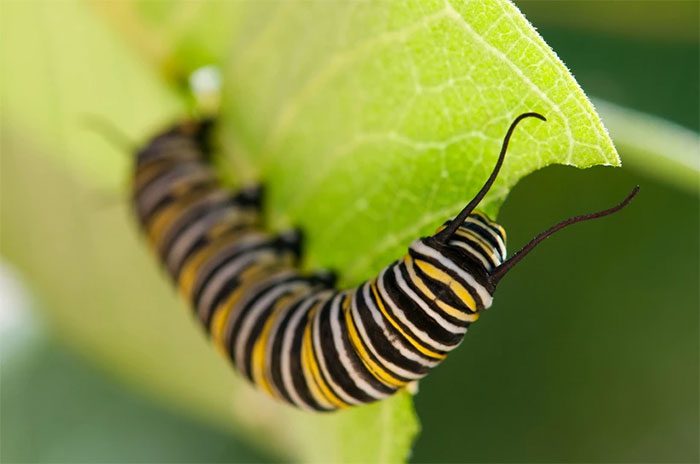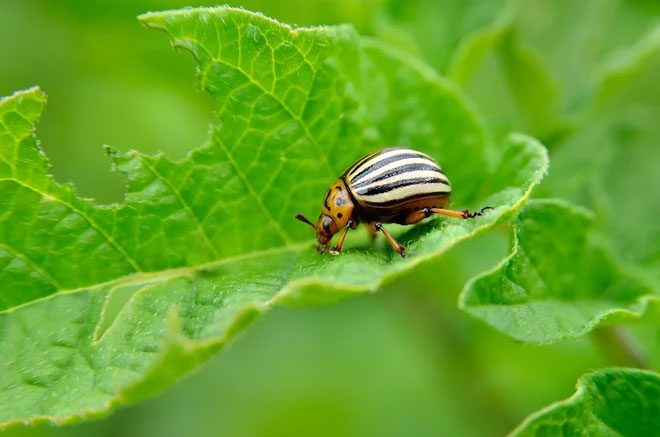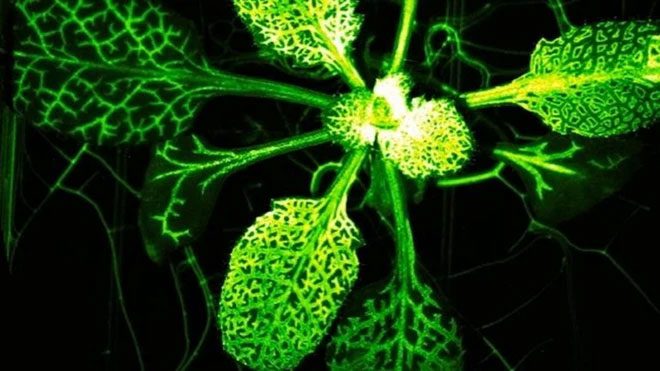Scientists have discovered that when faced with danger such as pests, plants have the ability to release a type of volatile compound into the surrounding area to warn healthy plants to activate their defense mechanisms.
According to a new study, injured plants emit certain chemical compounds that can penetrate the internal tissues of healthy plants, triggering defense mechanisms from within the plant’s cells.

Injured plants can release a compound that acts as a warning signal to those nearby. (Photo: Getty Images)
Masatsugu Toyota, the lead author of the study published in the journal Nature Communications, stated that for the first time, researchers have been able to “visualize the communication between plants.”
The idea that plants can “talk” began to take shape in the 1980s when two ecologists placed hundreds of caterpillars and spiders on willow branches to observe the plants’ reactions. They found that attacked plants started to produce chemicals that made their leaves less palatable and harder to digest, thereby deterring insects.
Even more surprisingly, scientists discovered that healthy plants of the same species, located 30 to 40 meters away and not physically connected to the infested plants, also took similar defensive measures to prepare against insect invasions.
This initial research team proposed a new idea: plants send chemical signals to each other through the air. However, no one knew which compounds were significant and how they were perceived—until now.
Plants obviously do not have ears or eyes, but previous studies have shown that they communicate with their environment by releasing chemicals known as volatile organic compounds that we can detect.

Plants also have the ability to communicate with each other. (Photo: Getty Images).
Just as humans can articulate many words, plants can produce a range of compounds for various purposes. Some are used to attract pollinators or to defend against predators.
However, one type of compound released when a plant is injured is green leaf volatiles. True to its name, most green-leafed plants can emit this compound when they experience physical damage.
In the new study, Toyota and colleagues manually crushed leaves and placed caterpillars on Arabidopsis thaliana or tomato plants to trigger the release of various green leaf volatiles. They then spread these compounds to healthy plants to see if they would react.
To monitor the response of the healthy plants, the research team genetically modified the plants so that calcium ions would fluoresce when activated within each cell. Calcium signaling is crucial for cellular functions in most living organisms on Earth, including humans.
Toyota noted that calcium signaling plays a similar role in plants, and depending on the type of plant, it can trigger messages to close leaves or digest insects.

Plants activate calcium signaling when attacked by leaf-eating insects. (Source: National Geographic)
After testing numerous volatile compounds, the research team found that only two compounds appeared to increase calcium ions within the cells. Additionally, they observed that calcium signaling first increased in protective cells that formed openings on the leaves or stomata of the plants—a significant finding as it indicates that the compounds are absorbed into the internal tissues of the plants.
Kessler, a professor at Cornell University, stated: “These compounds cannot easily permeate the surface of the plant. They must go through the stomata, [which] allows plants to actually inhale carbon dioxide and expel oxygen for photosynthesis.”
Toyota explained that calcium signaling acts like a switch to activate the plant’s defensive response. After the signal increased, the research team noted that the plants ramped up production of certain defensive gene expressions. For instance, Toyota indicated that plants might produce specific proteins to deter leaf-eating insects, causing them to suffer from diarrhea.
With this new understanding, researchers suggest that plants can be immunized against threats and harmful agents before they occur—similar to vaccinating plants.
For example, exposing healthy plants to infested plants or related volatile compounds could enhance their genetic defense abilities, contributing to reduced pesticide use.
This scientist stated that this progress has sown many seeds for future research.
Be Kind to Plants

Scientists say that plants, like animals, feel pain and stress. Therefore, be gentle with them. (Photo: Guido Mieth/Getty).
Molecular biologist Masatsugu Toyota at Saitama University in Japan noted that this communication system is surprisingly similar to what we observe in animals, but differs at the cellular level.
The information and methods of transmitting information are also different. However, once they receive signals, they activate calcium signaling waves, similar to how animal cells communicate with each other. Even human cells use calcium signals to exchange information.
Therefore, the scientist believes we should treat our plants kindly.
He stated: “Plants can sense various stimuli in their environment. They can smell, feel through touch, and communicate with their kin. There is no boundary between animals and plants here. I really want everyone, especially children, to understand that plants are very sensitive. Be gentle with all the plants around us.”


















































